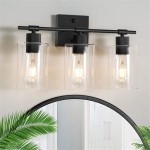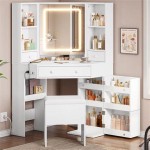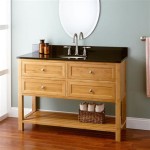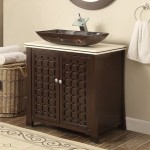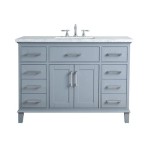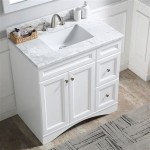60 Inch Wide Double Bathroom Vanity: A Comprehensive Guide
The 60-inch wide double bathroom vanity represents a significant upgrade for numerous bathrooms, offering expanded functionality and enhanced aesthetics. This size category provides ample countertop space, plentiful storage, and the convenience of accommodating two users simultaneously. Understanding the nuances of selecting, installing, and maintaining a 60-inch double vanity is crucial for homeowners seeking to maximize their bathroom's utility and visual appeal.
The choice of a bathroom vanity, particularly one as substantial as a 60-inch double vanity, is a multifaceted decision. Factors influencing this choice include the bathroom's dimensions, the existing plumbing configuration, the desired style, the need for storage, and budgetary constraints. A poorly chosen vanity can disrupt the flow of the bathroom, create functional inconveniences, and detract from the overall aesthetic. Conversely, a well-chosen vanity can transform the space, improving its efficiency and enhancing its visual impact.
Key Considerations Before Purchasing
Before embarking on the purchase of a 60-inch double vanity, several key factors warrant careful consideration. Overlooking these pre-purchase assessments can lead to dissatisfaction with the final product and potentially costly mistakes. These considerations involve accurately measuring the available space, evaluating existing plumbing, and carefully considering storage needs.
The initial step involves meticulously measuring the available space in the bathroom. The 60-inch width of the vanity is a primary consideration, but other dimensions are equally important. The depth of the vanity must be compatible with the bathroom's layout, ensuring adequate clearance for movement. The height of the vanity, typically ranging from 30 to 36 inches, should be comfortable for the intended users. Furthermore, consider the placement of doors, windows, and other fixtures that might impede the installation or use of the vanity. Accurate measurements are essential for avoiding obstruction and ensuring the vanity fits seamlessly into the bathroom's design.
Evaluating the existing plumbing configuration is another crucial step. The location of the water supply lines and the drainpipe will dictate, to some extent, the type of vanity that can be installed. Moving plumbing can be expensive and disruptive, so selecting a vanity that aligns with the existing plumbing layout is often the most practical approach. Consider whether the current plumbing is centered or offset, and choose a vanity with compatible sink placements. If modifications to the plumbing are unavoidable, obtaining quotes from licensed plumbers is advisable to accurately assess the potential costs involved.
Storage needs are a significant determinant in the selection of a 60-inch double vanity. Assess the items that need to be stored in the bathroom, including toiletries, towels, cleaning supplies, and personal care products. Consider the type of storage that best suits these items, such as drawers, cabinets, shelves, or a combination of these. Drawers are ideal for organizing smaller items, while cabinets are suitable for larger items and cleaning supplies. Shelves provide readily accessible storage for frequently used items. The internal organization of the vanity should be considered as well, including the presence of adjustable shelves, dividers, and other features that enhance storage efficiency. Choosing a vanity with adequate and well-organized storage will contribute significantly to a clutter-free and functional bathroom.
Materials and Construction
The materials used in the construction of a 60-inch double vanity significantly impact its durability, aesthetics, and overall value. Different materials offer varying degrees of resistance to moisture, wear, and tear. The choice of countertop material similarly influences the vanity's appearance and functionality. Understanding the properties and characteristics of different materials is essential for making an informed decision.
Common materials used for vanity cabinets include solid wood, plywood, MDF (medium-density fiberboard), and particleboard. Solid wood is the most durable and aesthetically pleasing option, offering natural beauty and resistance to wear. However, solid wood vanities are typically more expensive and can be susceptible to warping or cracking in humid environments if not properly sealed. Plywood is a strong and stable alternative to solid wood, offering good resistance to moisture and warping. High-quality plywood vanities can provide excellent durability and longevity. MDF is a cost-effective option that offers a smooth surface for painting or laminating. However, MDF is more susceptible to water damage than solid wood or plywood. Particleboard is the least expensive option but also the least durable, offering limited resistance to moisture and physical damage. The choice of cabinet material should be based on a balance of budget, durability requirements, and aesthetic preferences.
Countertop materials for 60-inch double vanities include natural stone (granite, marble, quartz), engineered stone (quartz), solid surface materials (acrylic), and laminate. Granite is a durable and heat-resistant natural stone that offers a wide range of colors and patterns. However, granite requires periodic sealing to prevent staining. Marble is a luxurious natural stone with a distinctive veined appearance. Marble is softer and more porous than granite, making it more susceptible to scratches and stains. Quartz is an engineered stone that combines crushed quartz with resin, resulting in a durable, non-porous, and low-maintenance countertop material. Solid surface materials, such as acrylic, offer a seamless and non-porous surface that is easy to clean and repair. Laminate is a cost-effective option that offers a wide range of colors and patterns. However, laminate is less durable than other countertop materials and can be susceptible to scratching and chipping. The choice of countertop material should be based on a balance of durability, aesthetics, maintenance requirements, and budget.
Construction quality is another critical factor to consider. Examine the vanity's construction for signs of solid craftsmanship, such as dovetailed drawer joints, soft-close hinges and drawer slides, and sturdy cabinet construction. Dovetailed drawer joints provide superior strength and durability compared to other joint types. Soft-close hinges and drawer slides prevent slamming and extend the life of the vanity. Sturdy cabinet construction ensures that the vanity can withstand the weight of the countertop and its contents. Inspect the finish of the vanity for imperfections, such as uneven paint, scratches, or chips. A well-constructed vanity will provide years of reliable service and maintain its aesthetic appeal.
Style and Design Considerations
The style and design of a 60-inch double vanity should complement the overall aesthetic of the bathroom. The vanity should integrate seamlessly with the existing decor, enhancing the bathroom's visual appeal and creating a cohesive design. Numerous style options are available, ranging from traditional to contemporary, each with its own distinct characteristics.
Traditional-style vanities typically feature ornate details, such as raised panel doors, decorative moldings, and antique-inspired hardware. These vanities often incorporate rich wood finishes and classic silhouettes. Traditional vanities are well-suited for bathrooms with a classic or formal aesthetic, creating a sense of elegance and sophistication.
Contemporary-style vanities typically feature clean lines, minimalist designs, and modern hardware. These vanities often incorporate sleek surfaces, geometric shapes, and neutral color palettes. Contemporary vanities are well-suited for bathrooms with a modern or minimalist aesthetic, creating a sense of simplicity and sophistication.
Transitional-style vanities bridge the gap between traditional and contemporary styles, incorporating elements of both. These vanities typically feature a balance of clean lines and decorative details, creating a versatile and timeless look. Transitional vanities are well-suited for a wide range of bathroom styles, offering flexibility and adaptability.
The color and finish of the vanity should also be carefully considered. White vanities are a popular choice, offering a clean and timeless look that complements a wide range of bathroom styles. Gray vanities are another versatile option, providing a neutral backdrop that allows other elements of the bathroom to stand out. Dark wood finishes add warmth and richness to the bathroom, while light wood finishes create a more airy and open feel. The choice of color and finish should be based on personal preferences and the overall aesthetic of the bathroom.
Sink styles for 60-inch double vanities include undermount sinks, vessel sinks, and integrated sinks. Undermount sinks are installed below the countertop, creating a seamless and easy-to-clean surface. Vessel sinks are installed on top of the countertop, creating a dramatic and eye-catching focal point. Integrated sinks are molded directly into the countertop, creating a seamless and hygienic surface. The choice of sink style should be based on aesthetic preferences and practical considerations, such as ease of cleaning and maintenance.
Hardware choices should complement the style and finish of the vanity. Options include knobs, pulls, and handles in various materials, such as chrome, brushed nickel, oil-rubbed bronze, and matte black. The hardware should be durable and comfortable to use, adding a touch of personality to the vanity.
Lighting is crucial for enhancing the functionality and aesthetics of the vanity. Consider installing vanity lights above the mirror or sconces on either side of the mirror to provide adequate illumination for grooming tasks. The lighting should be bright and even, minimizing shadows and creating a flattering reflection. The style of the lighting should complement the overall aesthetic of the bathroom.
Integrating a 60-inch double vanity into a bathroom requires careful planning and consideration of the existing space and design. By carefully considering the factors outlined above, homeowners can select a vanity that enhances the functionality, aesthetics, and overall value of their bathroom. Ultimately, the choice is a personal one, reflecting individual needs and preferences.

Dexterity 60 Inch Oak Vanity With Double Undermount Sinks Dreamline

Sausalito 60 Double Sink Bath Vanity Pottery Barn

Hargrove Double Bathroom Vanity 60 72

Chester 60 Inch Double Sink Natural Wood Vanity

Fallon 60 Double Vanity Rejuvenation

Dexterity 60 Inch Oak Vanity With Double Undermount Sinks Dreamline

Accos 60 Inch Rustic Double Sink Bathroom Vanity Marble Top

60 Inch White Double Sink Bathroom Vanity

60 Inch Double Sink Rustic Bathroom Vanity Top Options Matching Mirrors And Linen Cabinet

Modern Farmhouse 60 Double Sink Vanity Pottery Barn
